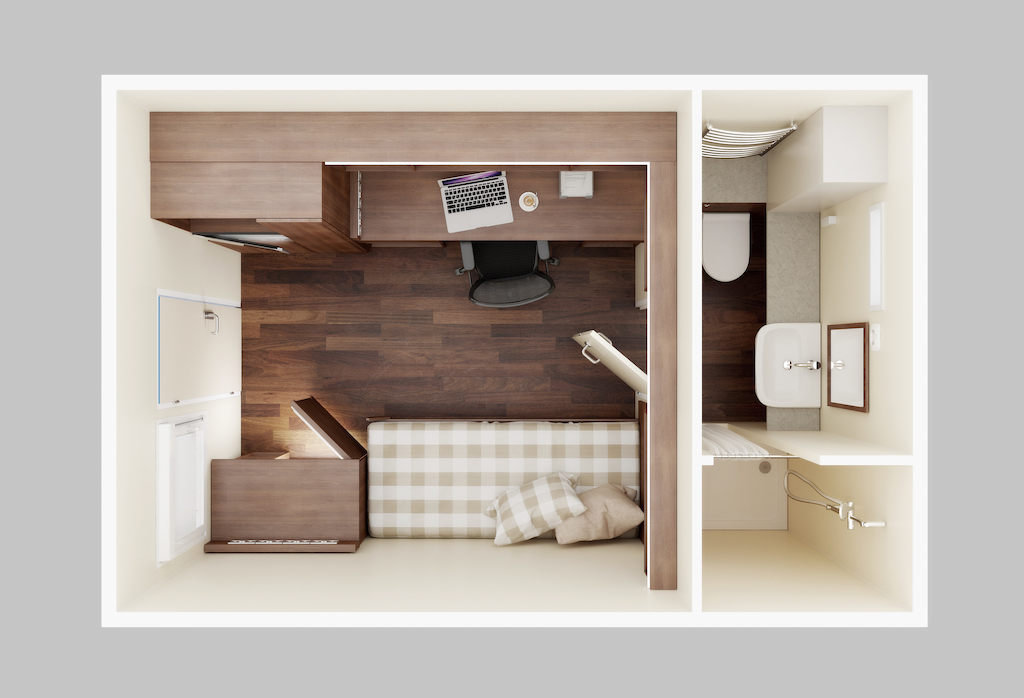Benjamin Rothwell, Business Development Manager at Bunkabin, explores the health and safety benefits of portable accommodation
Ensuring you and your employers are following health and safety procedures is crucial on any construction site and, due to the impact of the COVID-19 pandemic, increased measures have become essential. Introducing social distancing, enhanced hygiene practices and having a well-organised rota in place are just some of the steps businesses have had to take to ensure their workers are protected.
Choosing accommodation
When it comes to selecting on-site accommodation that is safe, portable accommodation has many benefits. It is affordable, offers flexibility and you can choose from many different options. Below we discuss how portable accommodation has many benefits including being COVID-secure, as well as steps employers should take to enhance these benefits.
Accessibility and control
Planning the layout and accessibility of any on-site accommodation is important for many reasons; however, it is now more vital than ever that you have considered how your workers can be safely accommodated for.
You need to ensure that any on-site facilities you use are following the current COVID-19 guidelines. This may require you to set up different camps or locations in order to keep teams isolated from each other. Portable accommodation makes this incredibly easy as it allows you to have full control over the whereabouts of your employees while ensuring all facilities are accessible.
You should consider this particularly if you are bringing in seasonal workers from overseas as they may need to self-isolate or quarantine upon arrival. It’s also crucial that you regularly keep a record of exactly who is leaving and entering your worksite at all times, not just for general health and safety purposes, but also to keep control of and prevent the potential spread of the virus.

Limiting contact
Providing those working in construction with portable accommodation is the perfect solution for limiting close contact with other employees as you can offer all of the required facilities in one individual cabin, preventing the need for sharing communal facilities such as kitchens, showers and toilets, which can be high-risk areas when it comes to transmission of viruses and bacteria.
If you’re unable to provide individual cabins, you should create rotas to limit the number of staff members that are allowed to use the same areas at once and avoid large numbers of people being on-site at the same time where possible.
Safety signs and procedures
Safety signs are a vital part of any construction site, and the same goes for any on-site accommodation or communal facilities you’re offering to your employees. Not only should you have standard health and safety signposts in relevant places around the site, but you should also invest in signs that clearly label any newly implemented restrictions.
For example, if you have one-way systems and hand-sanitising stations, then this should be communicated to your workers via safety signs and posters. This can easily be introduced when using portable accommodation, as you can label within the facility. It also means you don’t have to rely on a hotel or other accommodation provider following strict guidelines, as you can take control of it yourself.
You can also monitor the amount of people using communal facilities such as portable toilets and kitchens making it easier to ensure employees are socially distant as much as possible.

Clean facilities
Ensuring your employees are living and working in clean facilities that are following strict hygiene measures is another important factor to consider. This can be difficult to monitor if your employees are staying at a hotel or they are sharing accommodation.
Portable accommodation is easy to clean, and means you can set up a cleaning rota for before, during and after use of the facilities. This will minimise the risk of the virus spreading, and also has many other health and safety benefits.
Ventilation and temperature
In a workplace survey carried out by Bunkabin, it was revealed that one of the biggest concerns when it comes to physical factors in the working environment was a comfortable temperature. 42 per cent of people chose this as one of the most important factors in any working environment, and the same issue should be considered and addressed when providing workplace accommodation.
Air ventilation and temperature are both important; however, due to COVID-19, it is essential that any accommodation you provide to your employees is well-ventilated and has a comfortable temperature to prevent any spread of bacteria and keep workers safe.

Hygiene and sanitising
When providing portable accommodation, you should ensure that you stock these with hygiene and sanitising products for your employees so that they can easily follow the basic guidelines, keeping themselves safe at all times. Not only should the accommodation on offer be well-stocked, but any other on-site facilities should also have sanitising stations in place, or at least products and PPE that have been distributed to all construction workers on-site.
To conclude, there are many ways in which those working in the construction industry can easily achieve a COVID-secure working environment and portable accommodation can make this much easier to implement. The main benefits of investing in portable accommodation include:
- Limits contact and sharing of communal facilities or use of hotels
- Hygiene practices can easily be managed and maintained
- Well ventilated areas with a comfortable temperature
- Safety signs and procedures can easily be incorporated into the accommodation
- Great for any workers that need to self-isolate for a short period of time before returning to work
- Can easily be made accessible in line with your existing on-site layout
- Can be stocked with sanitising supplies and PPE for employees









